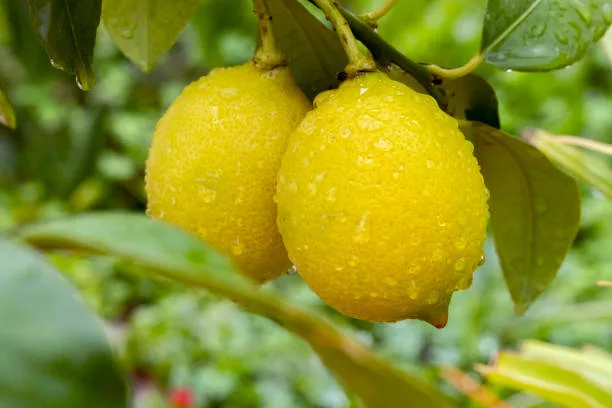Have you ever found yourself entranced by the idea of growing your own Meyer Lemon Tree but feel clueless about where to start? Or perhaps you’ve wondered how to care for this charming tree that produces such delightfully sweet lemons. Well, you’re in luck! That’s precisely what we’re diving into in this comprehensive guide.
In the upcoming sections, we’ll demystify the process of caring for, planting, and growing a Meyer Lemon Tree. We’ll answer your burning questions about how to choose the perfect spot for planting, the secrets to the tree’s maintenance, and how to keep it safe from pests and diseases. We’ll even share some tips about harvesting those lovely lemons!
Every bit of information in this guide is a step closer to the joy of harvesting your own home-grown lemons. There’s something magical about plucking a sun-ripened lemon straight from your tree, and trust me, you wouldn’t want to miss out on that. So, let’s embark on this citrus journey together, shall we? The time to start growing your Meyer Lemon Tree is now!
Introduction: The Unique Charms of the Meyer Lemon Tree
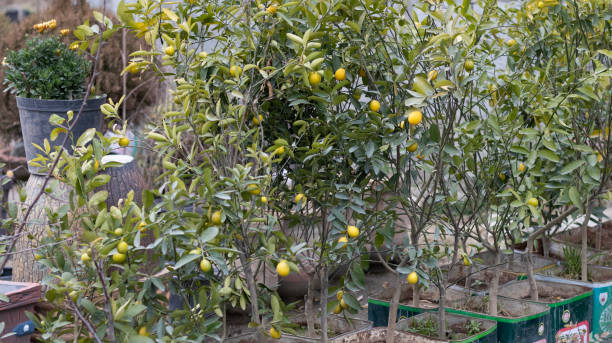
Welcome to the exciting world of the Meyer Lemon Tree! If you’re a fan of lemons or citrus fruits, you’re in for a treat. Meyer Lemon Trees are an all-time favorite among gardeners and fruit lovers alike for their charm, versatility, and the wonderful fruits they bear.
Originating from China, the Meyer Lemon Tree is a unique blend of a lemon tree and a mandarin orange tree. The result? A small, beautiful tree that produces sweet, less acidic lemons, which are a delight in the kitchen and a visual treat in your backyard or even indoors!
Understanding the Meyer Lemon Tree: Facts and Features
When one thinks of citrus trees, the immediate association might be their towering height and expansive foliage. However, the Meyer Lemon Tree gracefully sets itself apart with its petite stature and unique features.
This tree, while smaller compared to its citrus relatives, is no less captivating. It comfortably reaches a height of up to 10 feet, a size that wonderfully accommodates indoor growth, making it a lovely addition to your home.
At a glance, the Meyer Lemon Tree greets you with its verdant, dark green leaves that paint a picture of lush vitality. But the aesthetic charm of this tree doesn’t stop at its leaves.
Throughout the year, it adorns itself with enchanting white flowers. These blossoms not only enhance the tree’s visual appeal but also fill the surrounding air with a rejuvenating fragrance that whispers the story of spring, even in the middle of winter. In fact, while the tree is known for its year-round production, it exhibits a delightful surge in growth during the winter months.
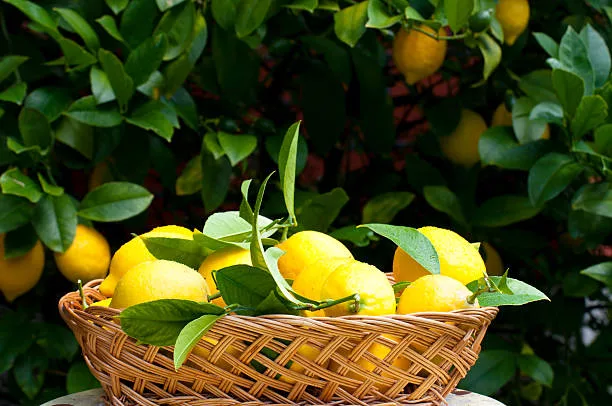
The fruits themselves are a testament to the tree’s unique charm. Unlike the traditional, larger lemons, Meyer Lemons have a distinctive round shape and are noticeably smaller. Their skin, a deep shade of yellow bordering on orange, is smoother and thinner than that of their counterparts.
This visual distinction is mirrored in their taste as well. When you take a bite, you’ll find that the Meyer Lemon is less of a one-note fruit and more of a symphony of flavors. It marries the refreshing tanginess of a lemon with the sweet undertones of an orange, creating a balanced, less acidic taste that lingers on your palate.
It’s no wonder then that the Meyer Lemon, with its unique blend of sweetness and acidity, has found its way into the hearts of culinary enthusiasts.
Both professional chefs and home cooks have discovered a darling in this citrus wonder, leveraging its unique taste to add a twist to traditional recipes and create delightful gastronomic experiences.
Whether you’re a gardening novice or a culinary adventurer, the Meyer Lemon Tree is a joy to grow and a treasure to cook with.
Finding the Ideal Home: Planting Your Meyer Lemon Tree
When it comes to planting your Meyer Lemon Tree, there’s a golden rule that echoes the wisdom of real estate moguls – location, location, location! Yes, just as in choosing a house, the spot you pick for your tree significantly influences its growth and health.
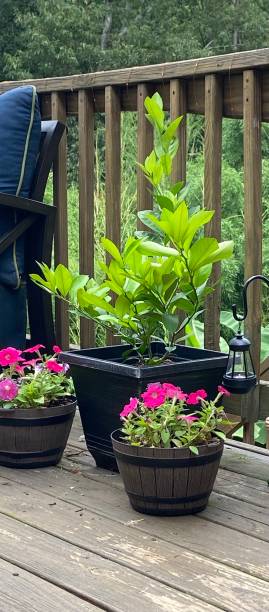
Let’s talk about the Meyer Lemon Tree’s love for the sun. Much like beach-goers basking in the summer heat, these trees thrive in bright, sunny conditions. Aiming for a sun-drenched spot is key, as Meyer Lemon Trees need a daily dose of 6 to 8 hours of sunlight. Just imagine it as a plant version of sunbathing!
But the sun isn’t the only factor. The soil you plant your tree in also plays a role.
Picture the soil as your tree’s bed. It needs to be comfortable and nourishing, just like how you would want your bed to be after a long day.
Meyer Lemon Trees aren’t too picky about their soil, but they definitely appreciate a well-draining and fertile one. It’s the kind of soil that provides just the right blend of air and water, fostering healthier roots and a more robust tree.
Now, whether you’re planning to beautify your garden or add some greenery indoors, your tree’s requirements remain the same. If your garden is the chosen spot, pick an area that’s not only sunny but also shielded from harsh winds. You wouldn’t want your tree to battle strong gusts, right?
On the other hand, if indoor growth is your plan, the rules don’t change. You still need to find a spot with plenty of sunlight. A south-facing window is often a prime candidate, acting as a natural stage for the sun to shine on your tree.
The takeaway here is that a happy Meyer Lemon Tree is one that’s bathing in sunlight. Remember this, and you’ll have a thriving tree that’s ready to gift you with its delightful, sun-soaked lemons. So, let’s roll up our sleeves and embark on this citrusy adventure in gardening!
Green Thumb 101: Care & Maintenance for Your Meyer Lemon Tree
Now that your Meyer Lemon Tree is planted, it’s time to talk about its care and maintenance. First and foremost, proper watering is key. Your Meyer Lemon Tree likes its soil to be moist but not soggy. Overwatering is a common mistake that can lead to root rot.
When it comes to feeding, citrus fertilizer is your Meyer Lemon Tree’s best friend. These trees are heavy feeders, and a balanced fertilizer can work wonders to keep them healthy and fruitful. Regular pruning will keep the tree compact and improve air circulation.
Remember, Meyer Lemon Trees are sensitive to frost. If you’re in a colder region, ensure you move your tree indoors during the winter or provide proper protection.
The Guardian of Greens: Shielding Your Meyer Lemon Tree from Pests and Diseases
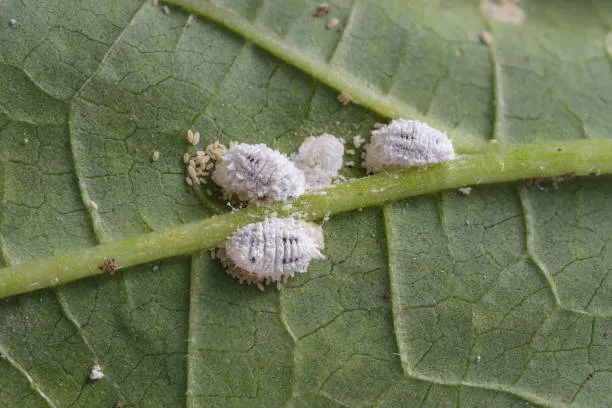
Despite our best efforts, it’s a universal truth that no plant is completely safeguarded against the threat of pests and diseases. Our beloved Meyer Lemon Tree is no different. It may occasionally become a target for common garden pests such as aphids, scale, and mealybugs. Spotting the signs of these unwanted guests is key to swift action.
Pests often leave telltale signs. For instance, if you find your tree’s leaves turning an unhealthy yellow or notice a sticky residue on the leaves or nearby surfaces, it’s a call to arms. These are likely indicators of a pest infestation, signaling you to take immediate action.
The good news is that dealing with these pests doesn’t require harsh chemicals. Opt for mild insecticidal soap or neem oil, which are plant-friendly and effective against these bugs. These are easy to apply and go a long way in helping your tree retain its health and vitality.
On the other hand, diseases might be a bit more subtle in showing their presence. You’ll need to keep a watchful eye for signs of root rot (usually a result of overwatering), canker diseases, and fungal infections. These diseases tend to exhibit symptoms such as discolored leaves, blackened or soggy roots, and in severe cases, a visible decline in the tree’s health.
The best defense against these diseases is often a strong offense. Ensuring proper watering practices, maintaining good air circulation around your tree, and overall vigilant care can prevent most of these diseases from taking hold in the first place.
But remember, even the most dedicated gardeners might sometimes face persistent issues that don’t resolve easily. If your tree’s symptoms persist despite your efforts, don’t hesitate to reach out to your local extension service or a gardening expert. Seeking professional advice can often provide a fresh perspective and targeted solutions, helping your Meyer Lemon Tree bounce back to its healthy, vibrant self.
Keep in mind that being a guardian of your green friend means staying alert and acting swiftly. With careful attention and timely action, you can ensure that your Meyer Lemon Tree thrives, free from the harm of pests and diseases.
Reaping the Fruits of Joy: When and How to Harvest Meyer Lemons
Experiencing the moment when your Meyer Lemon Tree first bears fruit is akin to witnessing a milestone. It’s a thrilling chapter in your gardening journey that comes with its own sense of fulfillment. However, understanding when and how to harvest your Meyer Lemons is just as crucial as the care you’ve put into nurturing the tree itself.
Meyer Lemons are unique in the way they signal their readiness for harvest. They trade their initial green attire for a deep yellow hue akin to the warm midday sun. Additionally, they become slightly soft to the touch. This transformation is nature’s way of telling you that your lemons are ripe and ready for plucking.
An exciting feature of the Meyer Lemon Tree is its ability to bloom and bear fruit simultaneously throughout the year. This means that, unlike many fruit trees that have specific harvesting seasons, your tree is a year-round gift that keeps on giving. However, this doesn’t mean you should rush the harvest. The secret to the Meyer Lemon’s unique, sweet flavor is time. The longer the lemons are allowed to ripen on the tree, the sweeter they become.
Harvesting the fruit requires a gentle touch and a bit of patience. Instead of pulling or yanking the lemons, which could potentially harm the tree, you should gently twist the fruit until it willingly releases from the stem. This method ensures that the tree is undamaged, ready to produce the next round of delicious lemons.
After the joy of harvesting comes the question of storage. Meyer lemons, once plucked, can be stored at room temperature for about a week. However, if you want to extend their freshness, the refrigerator is your best bet, helping you keep your lemons zesty for longer.
The process of harvesting Meyer Lemons is a beautiful blend of patience, timing, and gentle care. It’s an exciting culmination of your efforts, transforming your love and dedication into tangible, sweet rewards. With each lemon you harvest, you’re not only gaining a delicious fruit but also a piece of sunshine, a slice of joy straight from your own garden.
Meyer Lemon Tree FAQs
How Tall Do Meyer Lemon Trees Grow?
Meyer lemon trees are relatively small compared to other citrus trees. In optimal conditions, a Meyer lemon tree can grow up to 10 to 15 feet tall. However, when grown in a pot or when pruned regularly, the tree’s size can be controlled to maintain a height of around 3 to 5 feet, making it an excellent choice for indoor cultivation.
What Is The Difference Between A Meyer And A Regular Lemon Tree?
Meyer lemons and regular lemons, often referring to the Eureka or Lisbon varieties, have several differences in terms of their origin, size, taste, and color.
1. Origin: The Meyer lemon is originally from China and is a cross between a regular lemon and a mandarin orange. On the other hand, regular lemons like Eureka and Lisbon are thought to have originated in the Middle East.
2. Size and Appearance: Meyer lemon trees are smaller and more round in shape compared to regular lemon trees, making them perfect for indoor growth or smaller spaces. The leaves are dark green and glossy. Meyer lemons themselves are smaller, rounder, and have a deeper yellow to orange skin, which is thinner and softer. Regular lemons, on the other hand, have a brighter yellow, thicker skin and are larger in size.
3. Taste: The flavor of the Meyer lemon is one of the key differences. They are sweeter, less acidic, and more fragrant than regular lemons, thanks to their mandarin orange lineage. The taste of Meyer lemons is often described as a perfect blend of sweet and tart. In contrast, regular lemons have a pure, sharp, tangy, and acidic flavor.
4. Growing Season: Meyer lemon trees can bloom and produce fruit throughout the year, with the main harvest season in winter. Regular lemon trees have a more specific growing season, typically in the warmer months, depending on the region and climate.
These differences make Meyer lemons particularly popular among chefs and gardeners who appreciate their unique qualities.
Do Meyer Lemon Trees Lose Their Leaves?
Yes, it’s not unusual for a Meyer lemon tree to shed some leaves, especially during periods of environmental stress. This can happen due to a variety of factors, including changes in temperature, humidity, light levels, or even a change in location. It’s part of a normal process where the tree adjusts to new conditions.
However, if your Meyer lemon tree is losing a significant number of leaves or the leaves appear yellow or spotted before falling, it might be a sign of distress. The tree could be suffering from overwatering or underwatering, lack of nutrients, pest infestations, or diseases. In such cases, it would be necessary to accurately diagnose the problem and address it promptly to ensure the tree’s health.
Always remember, a healthy Meyer lemon tree requires a well-draining soil, sufficient sunlight, proper watering, and regular feeding with a suitable citrus fertilizer. Proper care can go a long way in preventing leaf drop and ensuring a thriving, productive tree.
Concluding Thoughts: The Rewards of Growing a Meyer Lemon Tree
And there we have it – a complete guide to the enchanting journey of growing a Meyer Lemon Tree. We’ve traversed the path from understanding this unique tree and choosing the perfect spot for it all the way to caring for it and reaping the beautiful, sweet-tasting fruits of our labor.
We’ve revealed how location plays a pivotal role in the success of your tree, alongside the importance of regular, mindful watering and nourishment. We also delved into combating the unwanted pests and diseases that might pose a threat to our leafy friend. And let’s not forget the anticipation and joy that come with harvesting our very own Meyer Lemons.
Growing a Meyer Lemon Tree is more than just a gardening project; it’s an embodiment of patience, care, and the joy of nurturing life. And the reward? A garden blessed with visual charm and the sweet, citrus aroma of Meyer Lemons.
As we wrap up this guide, we encourage you to embrace the journey with open arms. Remember, each lemon you harvest is not just a fruit but a symbol of the love, care, and commitment you’ve invested in your Meyer Lemon Tree. Happy gardening!

Hi there, I’m Mark Apletree, a gardening enthusiast with a passion for gardening, and gardening tools. I’ll be your go-to guide for all things related to gardening. The purpose of this website is to assist you in selecting the most suitable garden gear that meets your specific requirements.
See All Posts
